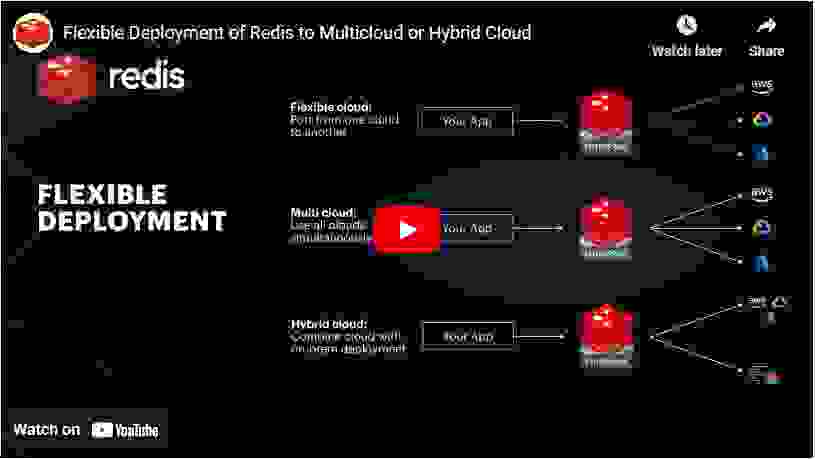
Learn more

Welcome back to our ongoing Redis in 90 seconds series. In this post, we’ll demonstrate how to use Redis with any major cloud providers, or in a hybrid cloud.
Most Redis providers simply host open source Redis and provide Redis as a cache. They don’t support Redis as a database. Not only that, they tend to lock your app into their cloud.
If you need to move to a different cloud provider for any reason, you’re often restricted. It’s because the rest of your data is stored in cloud-specific databases and services such as DynamoDB, Kinesis, etc. If you use multiple clouds at the same time in place of a multicloud, often because of constraints on the region’s availability, or specific business needs, you can’t easily do that. Lastly, if you need a hybrid cloud capability to store some private data on-prem while still using the cloud for the rest, you’re in for a lot of trouble. When you use other Redis providers you lose all the flexibility and you’re “cloud locked-in”.
With Redis Enterprise, since all or most of your data is stored in a single system, you can easily move from one cloud to another. Redis Enterprise is available on all major cloud providers, such as Amazon AWS, Google Cloud, Microsoft Azure, and even Heroku, making multicloud deployments a breeze. Redis Enterprise is available as downloadable software. Keep your private data in your private data center and keep the rest in the cloud, using Redis Enterprise’s hybrid deployment.
Watch the video below to see what we mean:
